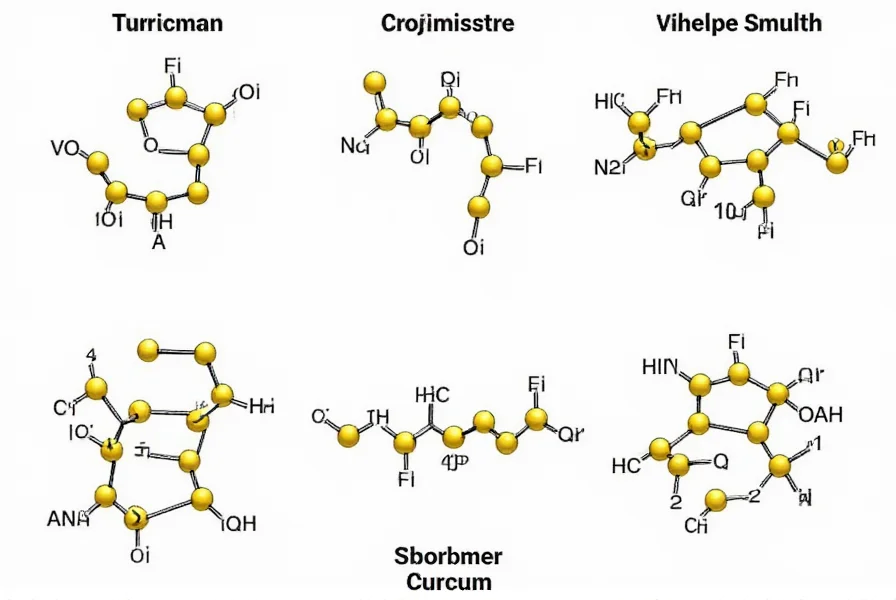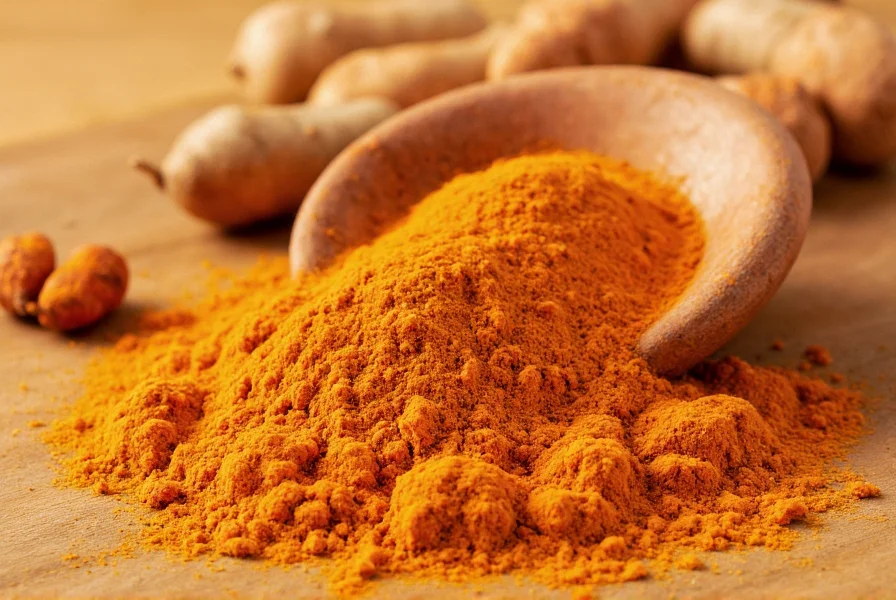Understanding the distinction between curcumin and turmeric is essential for making informed decisions about their health applications. Many consumers confuse these terms, leading to unrealistic expectations about the benefits of simply adding turmeric to food. This article examines the scientific evidence behind both, addressing common misconceptions and providing practical guidance based on current research.
The Fundamental Difference: Turmeric vs. Curcumin
Turmeric (Curcuma longa) is a flowering plant whose rhizomes are dried and ground to create the familiar yellow-orange spice. Curcumin represents just one of three curcuminoids found in turmeric, alongside demethoxycurcumin and bisdemethoxycurcumin. Despite comprising only a small percentage of the whole spice, curcumin accounts for most of turmeric's scientifically documented health properties.
When evaluating curcumin with turmeric supplements, it's crucial to understand that whole turmeric contains additional beneficial compounds including turmerones and other volatile oils that may work synergistically with curcuminoids—a concept known as the "entourage effect." However, for specific therapeutic applications studied in clinical trials, standardized curcumin extracts deliver more consistent and measurable results.

Scientifically Supported Health Benefits
Research on curcumin absorption rate and efficacy has expanded significantly in recent decades. Multiple meta-analyses of randomized controlled trials indicate curcumin demonstrates:
| Health Application | Research Support Level | Effective Dosage Range |
|---|---|---|
| Joint inflammation reduction | Strong (multiple RCTs) | 500-1,500mg/day standardized extract |
| Oxidative stress markers | Moderate | 500-1,000mg/day |
| Mood support | Emerging | 500-1,000mg/day |
| Cardiovascular markers | Preliminary | 80-500mg/day |
A 2022 meta-analysis published in Nutrients concluded that standardized curcumin preparations demonstrated significant anti-inflammatory effects compared to placebo, with effects becoming measurable after 4-8 weeks of consistent use. The research specifically noted that formulations addressing curcumin bioavailability enhancement produced more consistent results.
Addressing the Bioavailability Challenge
One of the most significant limitations of curcumin with turmeric is its poor bioavailability. Studies show that curcumin has low solubility in water, rapid metabolism, and quick systemic elimination. This explains why consuming regular turmeric powder rarely delivers therapeutic benefits—your body simply doesn't absorb enough curcumin.
Modern supplement formulations address this through several approaches:
- Piperine combination: Black pepper extract (piperine) can increase curcumin absorption by up to 2,000% according to research in Planta Medica
- Liposomal delivery: Encapsulating curcumin in lipid spheres improves water solubility
- Phospholipid complexes: Meriva® and similar formulations enhance absorption 29-fold
- Nanoparticle technology: Reducing particle size increases surface area for absorption
When evaluating best curcumin with black pepper products, look for formulations that specify both the curcumin concentration and the absorption technology used. Products without standardized extracts or bioavailability enhancers typically deliver insufficient curcumin to produce measurable effects.
Practical Usage Guidelines
For culinary use, adding black pepper and healthy fats (like olive oil or coconut oil) to turmeric-containing dishes can modestly improve curcumin absorption. However, for therapeutic applications, supplements providing standardized curcumin extracts are necessary.
Research suggests the following practical recommendations:
- For general wellness: 250-500mg of standardized curcumin (95% curcuminoids) daily
- For inflammation management: 500-1,500mg daily of enhanced-absorption curcumin
- Divide doses (take twice daily) for more consistent blood levels
- Consume with food containing healthy fats to further enhance absorption
- Allow 4-8 weeks for measurable effects on inflammatory markers
It's important to understand how much curcumin is in turmeric when considering dietary sources. One teaspoon (2g) of turmeric powder contains approximately 40-60mg of curcumin—far below the doses used in most clinical studies. This explains why simply adding turmeric to food rarely produces significant health benefits.
Safety and Considerations
Curcumin is generally well-tolerated at recommended doses. However, high doses (above 8g daily) may cause gastrointestinal discomfort in some individuals. Those taking blood thinners or diabetes medications should consult healthcare providers before starting curcumin supplements, as potential interactions exist.
Pregnant and breastfeeding women should avoid high-dose curcumin supplements, though culinary use of turmeric is considered safe. Individuals with gallbladder issues should exercise caution, as curcumin may stimulate bile production.
Conclusion: Making Informed Choices
Understanding the distinction between turmeric and curcumin is crucial for setting realistic expectations about their health benefits. While turmeric remains a valuable culinary spice with modest benefits, concentrated curcumin supplements with enhanced bioavailability deliver the effects documented in scientific literature. When selecting products, prioritize those with standardized extracts and proven absorption technologies rather than generic turmeric powders.
For those exploring scientific studies on curcumin benefits, reputable sources include the National Institutes of Health's PubMed database and systematic reviews published in peer-reviewed journals. Remember that consistent, long-term use is typically required to experience benefits, and results may vary based on individual health status and the specific formulation used.
Frequently Asked Questions
What's the difference between turmeric and curcumin?
Turmeric is the whole spice derived from the Curcuma longa plant, while curcumin is the primary bioactive compound within turmeric, making up only 2-8% of the spice. Turmeric contains curcumin plus other curcuminoids and compounds, but most research on health benefits specifically examines concentrated curcumin extracts.
How much curcumin should I take daily for inflammation?
Research suggests 500-1,500mg daily of a standardized curcumin extract with enhanced bioavailability (such as formulations containing piperine) for managing inflammation. Standard turmeric powder contains too little curcumin to be effective for this purpose—approximately 40-60mg per teaspoon compared to the 500mg+ needed for therapeutic effects.
Why do curcumin supplements need black pepper?
Black pepper contains piperine, which inhibits certain liver and intestinal enzymes that break down curcumin. Research shows piperine can increase curcumin absorption by up to 2,000%. Without this enhancement, most curcumin passes through the digestive system without being absorbed, making curcumin with black pepper formulations significantly more effective.
Can I get enough curcumin from cooking with turmeric?
No, culinary use of turmeric provides insufficient curcumin for therapeutic benefits. One teaspoon (2g) of turmeric contains only 40-60mg of curcumin, while research shows most health benefits require 500mg or more of standardized curcumin daily. Cooking with turmeric offers modest antioxidant benefits but won't deliver the anti-inflammatory effects documented in clinical studies.
How long does it take for curcumin to work?
Most research indicates it takes 4-8 weeks of consistent daily use to notice measurable effects from curcumin supplements, particularly for inflammation reduction. Blood marker improvements typically appear within this timeframe, though some people report subjective improvements in joint comfort within 2-3 weeks. Consistency is key, as curcumin's effects are cumulative.











 浙公网安备
33010002000092号
浙公网安备
33010002000092号 浙B2-20120091-4
浙B2-20120091-4